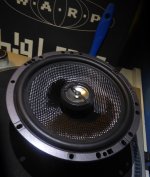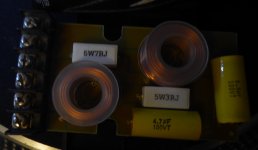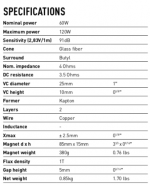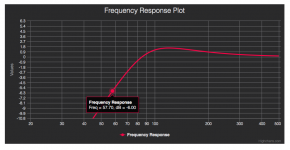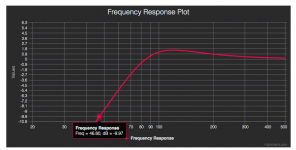------------PREAMBLE / RAMBLING INTRODUCTION--------------
First post here. Hello, nice to be here. Seems like a good place to be!
This community seems to still be bustling along on old school BB forum whatever-it - and is and doing well. The only other forum I frequent that's doing well on a simple old style forum is very community based and quite the wonderful place which has had me end up many times in the dolomites, Italian alps, French alps, and even a helicopter (followed by an Italian hospital). I'm not expecting snow trips from here, but some noob help would be VERY MUCH appreciated.
That's all intended as quite the compliment, just to be clear. I do love a good old fashioned forum and the ones that still tick along nicely have to have something special in them.
Right ------ ON TO THE ACTUAL POINT OF THE POST! -------------
INTRO AND THE BASICS:
--So I'm making my first speaker. I have all the skills and tools needed, I'm a farmer, I can make anything out of anything (so long as you just need it to last till the end of the season). Point being, construction of almost anything is no problem at all. Hexagonal multi point wangjangling pressure canceling hyperwave cab, with a tapered horn poking out the bottom... I have the tools and the materials. All good. No probs.
THE DRIVER AND MY EXPECTATIONS:
--(see pics)-- I have a coaxial driver (I mean, it's all the rage nowadays after the ls50). It's a Focal 6.5" car audio driver. 165ca, they served me well in a MX5 which is no more. I have the two way with crossover version in my newer car and really quite like them (when I'm parked, not roof down on the motorway) I know what to expect, I'm not looking for perfection, just a speaker I can pair with my next project (A nice little mid/bass type sub) and put in a small bedroom. Enjoy the music, and don't fuss the details. Thankfully Focal provide a whole load of data on the speaker, Thiele/Small parameters and whatnot. I'm unfamiliar with what they mean, despite a week of lurking, googling, and generally hoping to find a calculator which would just tell me what to make and save me from having to use my brain😀
MY NEEDS:
What I lack is the knowledge. It's always the case eh. Traditional noob post right here. I have the driver, the skills, and my expectations are appropriately low for a car driver. Where do I start? I'd assume sealed, but ported perhaps? It'd have to be a front port. Long tapered horn thing? I'm keen to get as much bass as I can out of them (check out the frequency response graph in the pics) so my sub (Which I haven't built yet) can be focussed on lower frequencies. The good stuff. No way I'm sticking them in my good system with the good sub - I need a new sub! Again though, my expectations are appropriate for the driver! See what I get first.
SPECIFIC QUESTIONS:
-- Sealed or ported?
-- If ported, what sort? One thing I haven't got is a nice flared tube, but a slot port would be easy enough if ported is the way to go. Again, it must be be front firing though, they're gonna be close to a wall.
-- (see pics) -- I have a crossover from a previous car audio setup that, well, it's a real crossover not the little block on the coaxials. I'm not sure it's a good idea to mess with what Focal have decided is right though so probably not gonna introduce that potential bag of problems into the mix. But, if any real crossover is better than a little block on car audio coaxials, then so be it.
-- Volume of the enclosure. Try as I might I always seem to be missing one TSP that gets me the internet calculators working. Annoying. It's usually "Actual System Q (Qtc)" and "Resonance Frequency (Fb)". I have no idea how to calculate or find that. I've been messing about on diyaudioandvideo.com and their calculators. but my noob status prevents me from believing anything as I don't know the Qtc or Fb as mentioned.
FINISHING UP THE POST:
I could ramble on about this for ages, donkeys years, and eons. And I've already gone on too long. Basically I have some data, and I want to make the best of what I already have, but need help.
So... Here I am, asking the community that seems to be the place where people learn and experiment and build. Any advice or thoughts would be very very much appreciated.
First post here. Hello, nice to be here. Seems like a good place to be!
This community seems to still be bustling along on old school BB forum whatever-it - and is and doing well. The only other forum I frequent that's doing well on a simple old style forum is very community based and quite the wonderful place which has had me end up many times in the dolomites, Italian alps, French alps, and even a helicopter (followed by an Italian hospital). I'm not expecting snow trips from here, but some noob help would be VERY MUCH appreciated.
That's all intended as quite the compliment, just to be clear. I do love a good old fashioned forum and the ones that still tick along nicely have to have something special in them.
Right ------ ON TO THE ACTUAL POINT OF THE POST! -------------
INTRO AND THE BASICS:
--So I'm making my first speaker. I have all the skills and tools needed, I'm a farmer, I can make anything out of anything (so long as you just need it to last till the end of the season). Point being, construction of almost anything is no problem at all. Hexagonal multi point wangjangling pressure canceling hyperwave cab, with a tapered horn poking out the bottom... I have the tools and the materials. All good. No probs.
THE DRIVER AND MY EXPECTATIONS:
--(see pics)-- I have a coaxial driver (I mean, it's all the rage nowadays after the ls50). It's a Focal 6.5" car audio driver. 165ca, they served me well in a MX5 which is no more. I have the two way with crossover version in my newer car and really quite like them (when I'm parked, not roof down on the motorway) I know what to expect, I'm not looking for perfection, just a speaker I can pair with my next project (A nice little mid/bass type sub) and put in a small bedroom. Enjoy the music, and don't fuss the details. Thankfully Focal provide a whole load of data on the speaker, Thiele/Small parameters and whatnot. I'm unfamiliar with what they mean, despite a week of lurking, googling, and generally hoping to find a calculator which would just tell me what to make and save me from having to use my brain😀
MY NEEDS:
What I lack is the knowledge. It's always the case eh. Traditional noob post right here. I have the driver, the skills, and my expectations are appropriately low for a car driver. Where do I start? I'd assume sealed, but ported perhaps? It'd have to be a front port. Long tapered horn thing? I'm keen to get as much bass as I can out of them (check out the frequency response graph in the pics) so my sub (Which I haven't built yet) can be focussed on lower frequencies. The good stuff. No way I'm sticking them in my good system with the good sub - I need a new sub! Again though, my expectations are appropriate for the driver! See what I get first.
SPECIFIC QUESTIONS:
-- Sealed or ported?
-- If ported, what sort? One thing I haven't got is a nice flared tube, but a slot port would be easy enough if ported is the way to go. Again, it must be be front firing though, they're gonna be close to a wall.
-- (see pics) -- I have a crossover from a previous car audio setup that, well, it's a real crossover not the little block on the coaxials. I'm not sure it's a good idea to mess with what Focal have decided is right though so probably not gonna introduce that potential bag of problems into the mix. But, if any real crossover is better than a little block on car audio coaxials, then so be it.
-- Volume of the enclosure. Try as I might I always seem to be missing one TSP that gets me the internet calculators working. Annoying. It's usually "Actual System Q (Qtc)" and "Resonance Frequency (Fb)". I have no idea how to calculate or find that. I've been messing about on diyaudioandvideo.com and their calculators. but my noob status prevents me from believing anything as I don't know the Qtc or Fb as mentioned.
FINISHING UP THE POST:
I could ramble on about this for ages, donkeys years, and eons. And I've already gone on too long. Basically I have some data, and I want to make the best of what I already have, but need help.
So... Here I am, asking the community that seems to be the place where people learn and experiment and build. Any advice or thoughts would be very very much appreciated.
Attachments
I've also realised that I've been overthinking it. A little knowledge is a dangerous thing.
Less funkyness. Simple box. Listen. Enjoy music where there previously was none.
I'm still ery curious wether to go ported or sealed?
The rest, I'm sure it'll sound like something we can enjoy music on.
Less funkyness. Simple box. Listen. Enjoy music where there previously was none.
I'm still ery curious wether to go ported or sealed?
The rest, I'm sure it'll sound like something we can enjoy music on.
Some traditional thinking says closed for sound quality, vented for extension. This is far from the whole story though, and I don't like to perpetuate stereotypes.
You want resonance and Q data. Fs is the resonance frequency of the speaker. Fc is what you'd call it once it's been modified by a closed box. Vented is a little different, Fb would be the resonance of the vented box but the box resonates independently of the speaker in this case (with closed they work as a team).
Qts is the speaker Q, Qtc is the Q once put in a closed box.
You want resonance and Q data. Fs is the resonance frequency of the speaker. Fc is what you'd call it once it's been modified by a closed box. Vented is a little different, Fb would be the resonance of the vented box but the box resonates independently of the speaker in this case (with closed they work as a team).
Qts is the speaker Q, Qtc is the Q once put in a closed box.
The Qts of your driver indicates that it is not suitable for a ported enclosure, so design for a sealed enclosure.
Qtc is chosen by you. A value of 1.00 will give strong bass.
The resonance frequency if the box, fb, is not required to be inputted into this calculator if designing for a sealed box: Speaker Box Enclosure Designer / Calculator
Remember to change the volume unit to litres. I used an effective cone diameter of 140mm.
If you do it correctly, you should come up with an enclosure plan.
Qtc is chosen by you. A value of 1.00 will give strong bass.
The resonance frequency if the box, fb, is not required to be inputted into this calculator if designing for a sealed box: Speaker Box Enclosure Designer / Calculator
Remember to change the volume unit to litres. I used an effective cone diameter of 140mm.
If you do it correctly, you should come up with an enclosure plan.
I get a sealed box volume of 27 lires (0.95 cu ft) with the bass response 3dB down at 66Hz.
How did you get on?
How did you get on?
Thanks for the replies so far. Especially the explanations of what Fc and Fb are.
I'm going to go sealed. If it's designed for sealed and that makes it simpler to make, i'm in. Can't argue with that.
I'm wondering how big a 27 litre box would be... -3db at 66hz would be quite acceptable considering what I'm working with. I've been playing about on speakerboxlite.com as they have the non-coaxial version of the woofer already in there as a preset. Haven't got anything quite that low, but not far off. And of course playing about with cheap 10-12" subwoofer boxes to see where they could potentially meet up... A bit of a waste of time but I'm sure I can get a relatively compact sub to meet with these.
I'll have a play on the Speaker Box Enclosure Designer / Calculator now I know what's what.
Thankfully WAF isn't a factor as when I told the GF that WAF/SAF is a thing on audio/cinema forums and the like she laughed and said "you put your speakers wherever you like, I don't care... You have fun with 'em!" But... These would ideally be going in a smallish bedroom so size so no one is whacking them constantly while walking past so I'm trying at least to keep them relatively thin. Or, sod that and put 'em in the other room, I don't know. Performance vs convenience, the age old compromise of everything ever.
I'm going to go sealed. If it's designed for sealed and that makes it simpler to make, i'm in. Can't argue with that.
I'm wondering how big a 27 litre box would be... -3db at 66hz would be quite acceptable considering what I'm working with. I've been playing about on speakerboxlite.com as they have the non-coaxial version of the woofer already in there as a preset. Haven't got anything quite that low, but not far off. And of course playing about with cheap 10-12" subwoofer boxes to see where they could potentially meet up... A bit of a waste of time but I'm sure I can get a relatively compact sub to meet with these.
I'll have a play on the Speaker Box Enclosure Designer / Calculator now I know what's what.
Thankfully WAF isn't a factor as when I told the GF that WAF/SAF is a thing on audio/cinema forums and the like she laughed and said "you put your speakers wherever you like, I don't care... You have fun with 'em!" But... These would ideally be going in a smallish bedroom so size so no one is whacking them constantly while walking past so I'm trying at least to keep them relatively thin. Or, sod that and put 'em in the other room, I don't know. Performance vs convenience, the age old compromise of everything ever.
Yeah... Hmmm. Looking at the room again, it's a goofy shape and who knows where they'll go so performance it is. If they sound any good I'll manage to fit them in somewhere, and a sub, maybe under the bed? That could be fun.
On the spec sheet, Vas =9litres. Vas is the measure of air that compares to the speaker. Normally a closed box is smaller than Vas so that it has an influence on the speaker.
Your Q=0.87, this is a little high. This speaker was probably designed to work best into the boot of a car, which is big enough that the speaker doesn't 'feel' it. In other words it has its bass already pumped up without the help of an enclosure.
Your Q=0.87, this is a little high. This speaker was probably designed to work best into the boot of a car, which is big enough that the speaker doesn't 'feel' it. In other words it has its bass already pumped up without the help of an enclosure.
...with the bass response 3dB down at 66Hz.
What are F6/F10.
Toole has shown F3 to be meaningless to the human ear/brain.
dave
A value of 1.00 will give strong bass.
Qt of 1 will give a slightly underdamped response and trades smaller box size for a bit of a peak and less downward extension.
dave
Was just trying to keep it simple Dave! 🙂
A Qts of 0.87 is best suited to open baffle mounting, but I didn't want to go there.
A Qts of 0.87 is best suited to open baffle mounting, but I didn't want to go there.
Yeah, goofy specs from goofy drivers eh. The inter door panel of a car, if properly sealed, would probably be about right. It certainly was close in my MX5. Their 2 part with external crossover will freak me out sometimes shaking my trousers about in the current car. They can't pump out huge power without breaking up at the low end though.
Anyways.. It seems that anything about 16-17 litres or above breaks into the -3db 60's.
15.38 litres gets 69.04hz -3db, so they don't have to be huge to meet up with a sub of some sort. I'll likely go a bit bigger and lower into the 60's but it's good to know it'll be a simple job and I can whack it together fairly straightforward without obsessing over wether it's 22.5 litres or 22.6 litres. It's all good enough.
I had I can live with that for an almost zero cost weekend project. If it works out, mid 60's ain't a bad spot to meet up with a sub.
@planet10, - I have no idea what the F6/F10 are, this calculator doesn't show it, but i suspect it rolls of fairly steep after the 60hz ish zone.
Final couple questions for anyone who has an opinion:
--Any thoughts on damping material? I have some old fluff that'd do the job nicely enough for free.
--Aside from sturdy bracing, is there anything worth doing inside the box, or should I just stick it together simple at right angles with simple bracing?
In fact, as a first-timer a sort of ok-ish result with room for improvement is about the perfect way to get me wondering how they might be improved upon in v2.0... And so it goes.
Anyways.. It seems that anything about 16-17 litres or above breaks into the -3db 60's.
15.38 litres gets 69.04hz -3db, so they don't have to be huge to meet up with a sub of some sort. I'll likely go a bit bigger and lower into the 60's but it's good to know it'll be a simple job and I can whack it together fairly straightforward without obsessing over wether it's 22.5 litres or 22.6 litres. It's all good enough.
I had I can live with that for an almost zero cost weekend project. If it works out, mid 60's ain't a bad spot to meet up with a sub.
@planet10, - I have no idea what the F6/F10 are, this calculator doesn't show it, but i suspect it rolls of fairly steep after the 60hz ish zone.
Final couple questions for anyone who has an opinion:
--Any thoughts on damping material? I have some old fluff that'd do the job nicely enough for free.
--Aside from sturdy bracing, is there anything worth doing inside the box, or should I just stick it together simple at right angles with simple bracing?
Yes... Simple is what I need for this first mess-about with drivers I have laying about idle! I don't want to get into the world of open baffle funny-business, I'm happy if they just sound half decent in their deliverable frequency range😀[/quote]Galu said:Was just trying to keep it simple Dave! 🙂
A Qts of 0.87 is best suited to open baffle mounting, but I didn't want to go there.
In fact, as a first-timer a sort of ok-ish result with room for improvement is about the perfect way to get me wondering how they might be improved upon in v2.0... And so it goes.
Was just trying to keep it simple Dave! 🙂
But a useless piece of info (except for use in a filter) is not very simple.
dave
@planet10, - I have no idea what the F6/F10 are, this calculator doesn't show it,
If your modeler does not give you a graph to read, throw it out. The shape is as important as the numbers.
A woofer with that high a Q can be put into as large a sealed box as you can live with, and if it is still underdamped, you can make it aperiodic to push the Q lower..
dave
By 'trying to keep it simple', I was referring to my admittedly way too simple description of a system Q of 1.0. I do know what that really looks looks like on a graph of dB against frequency.But a useless piece of info (except for use in a filter) is not very simple.
Ideally, I would have recommended designing for a system Q of 0.7, but the simple calculator to which I referred did not provide a sealed cabinet solution when inputting a Qts of 0.87.
As to the inappropriateness of using f3 to describe the bass extension, I stand ready to be educated. I do see bass extension nowadays being quoted thus: '41Hz (-6dB re. 200Hz)'.
Fill the enclosure loosely with BAF wadding and adjust the amount by ear (the contents of an old pillow would suffice).--Any thoughts on damping material? I have some old fluff that'd do the job nicely enough for free.
--Aside from sturdy bracing, is there anything worth doing inside the box, or should I just stick it together simple at right angles with simple bracing?
A small box is rigid and may not require bracing. A larger box would benefit from an open bracing shelf placed horizontally across the middle of the box.
Again, that's keeping it simple.
If your modeler does not give you a graph to read, throw it out. The shape is as important as the numbers.
A woofer with that high a Q can be put into as large a sealed box as you can live with, and if it is still underdamped, you can make it aperiodic to push the Q lower..
dave
I'd also been playing with another, results below in the pics.
Aperiodic is a term I'm not familiar with and with my lack of knowledge google isn't much help - can you give me the right terms to search or a link that explains it to an idiot?
Fill the enclosure loosely with BAF wadding and adjust the amount by ear (the contents of an old pillow would suffice).
A small box is rigid and may not require bracing. A larger box would benefit from an open bracing shelf placed horizontally across the middle of the box.
Again, that's keeping it simple.
Excellent simple advice. I will do just that. Many thanks.
Now... Do I get around to slapping this up today?? Hmmm... day off work lazing in bed, or day making cool stuff based on the internet's usefullness... We shall see🙂
I'd also been playing with another, results below in the pics.
Ooops, forgot the pics. Here they are. Not the best curve, but it'll do for a first try right?
Attachments
- Home
- Loudspeakers
- Multi-Way
- New user. First speaker build. All the usual questions!!
